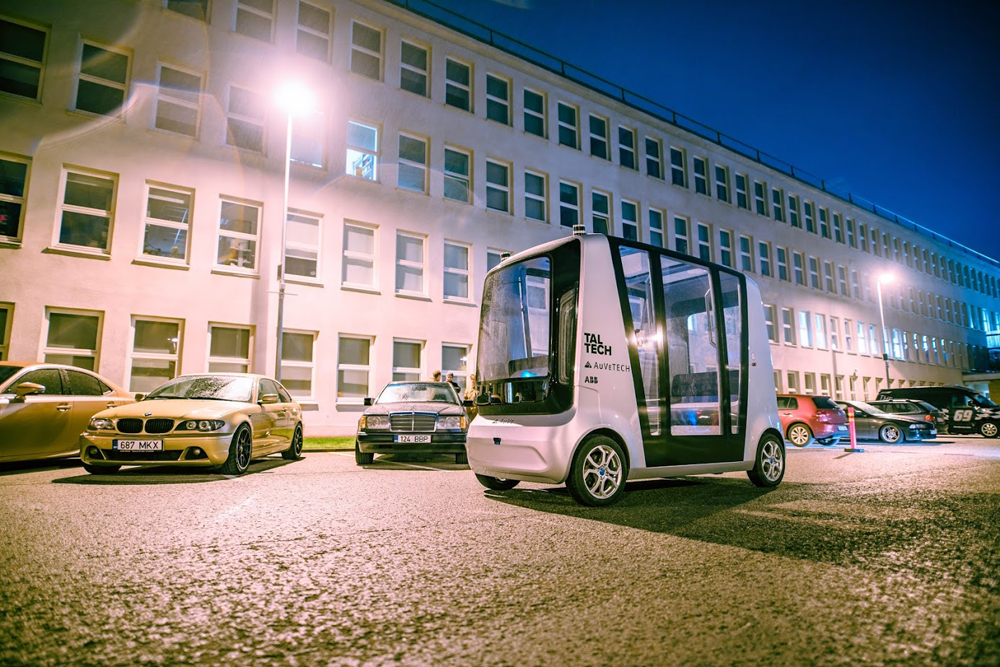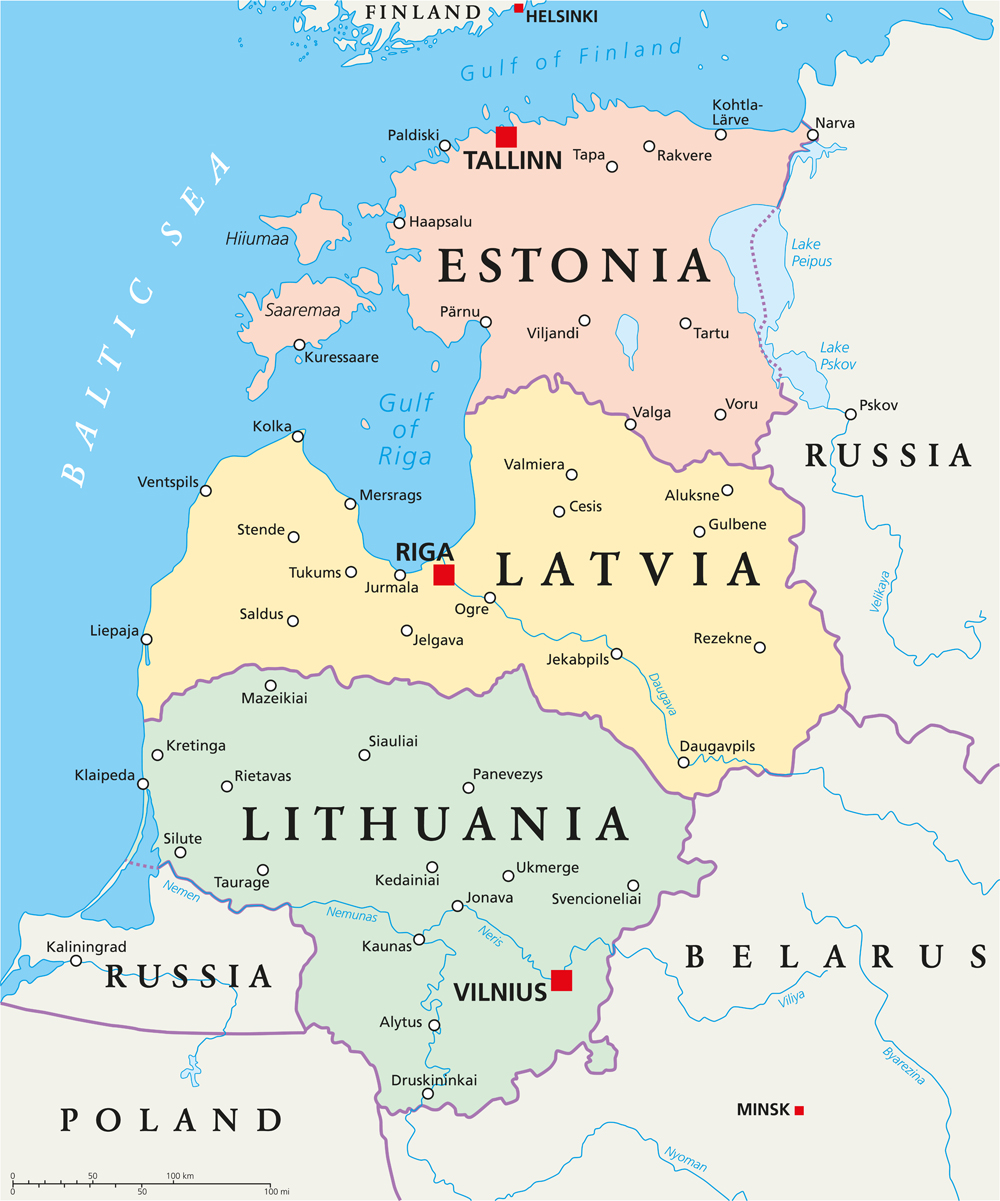
The ITS sector of the three Baltic states - Latvia, Lithuania and Estonia - is steadily developing, thanks to the active and ongoing introduction of new transportation technologies. Recent statements from representatives of regional authorities and some independent local ITS analysts suggest that the region is seeing the benefits that ITS can bring in terms of road safety.
Analysis from the European Transport Safety Council (ETSC) shows that these three countries – along with Greece and Portugal - made the most progress in reducing road deaths over the past decade.

Estonia was awarded the ETSC’s Road Safety Performance Index award this year, after overseeing a 34.2% reduction in road deaths from 2010-19 - an annual average change in the number of fatalities of 6.6%.
It now has a level of road deaths per million inhabitants (39) which is comparable to the Netherlands (38), a change that ETSC calls “a remarkable accomplishment and a reflection of significant investment and strategic leadership on road safety over several years”.
Further growth
Professor Igor Kabashkin, senior expert at Latvia’s Riga Transport and Telecommunication Institute (TSI) – the largest non-state technical higher educational and scientific establishment in the Baltics region – explains that, while at present the Baltic states’ ITS market remains relatively small in volume and value terms, it has big potential for further growth.
In an exclusive interview with ITS International, Kabashkin said that some progress has already been achieved.
One of the best examples is the Latvian city of Jelgava, which is widely recognised as leading the practical implementation of the smart city concept in the region.
So far, regional authorities have completed the introduction of a digital transformation platform, based on artificial intelligence and Big Data technologies. This is capable of collecting data and transforming it into key performance indicators for major urban infrastructure objectives.
The system was introduced by Latvian company Optokon Baltic and operates on the basis of a network of air quality, environment, energy and transport infrastructure sensors and systems linked to a low-power wide-area network.
According to Kabashkin, while a systematic approach towards the development of ITS in Latvia is lacking, many initiatives have been implemented at the municipal level and by individual transport service providers.
For example, the company SJSC Latvian State Roads is responsible for the provision and management of traffic information in Latvia. It manages up to 188 data collection points across the country. The online and historic data about traffic intensity are available for the public on a dedicated webpage (http://www.lvceli.lv) which also provides information about restrictions in the transport network.
Travel information
In addition, the company operates a road weather information system, comprised of 53 stations (some combined with traffic intensity measurement points) measuring different characteristics such as air and road temperature, humidity, dew point, wind speed and so on, with a central system for data processing.
In recent years a number of travel information services to manage public transport journeys have been introduced in the Latvian transport sector.
One such is the 1188 Information service, which allows users to plan their trips by inter-city buses, trains and ferries, giving them information about trip duration, price, distance, number of stops and route, visualised on a map.

© Tallinn University of Technology
The launch of the Bezrindas.lv service also provided an opportunity for local citizens to buy tickets online, while the Train and Bus in Latvia app allows schedules for selected routes to be saved and used for reference.
In recent months, Latvian authorities have completed the introduction of some ITS solutions for public transport, mainly concentrated in Jelgava and the country’s capital, Riga.
The most developed of these relate to e-ticketing in the two cities, based on the Atlas ticketing solution provided by ACS Solutions (part of Xerox).
The introduction of the new system resulted in the increased efficiency, quality, transparency and popularity of the public transport system.
Jelgava city has also implemented its own solution for e-ticketing, based on the integration of e-tickets for public transport in bank cards.
Meanwhile, in Lithuania the majority of local ITS projects are implemented under the management of ITS Lithuania, which was established in September 2011.
The first such organisation in the Baltic states, it represents a wide range of sectors within the ITS community, including central government, local authorities, the automotive industry, transport operators, manufacturers, plus academic and research institutions.
ITS projects
So far, traffic control has been the main area in which the majority of ITS projects have been implemented. Yet while progress may not be regarded as speedy, there is clearly an appetite for new ideas and the benefits they can bring.
“In Lithuania, ITS still needs to be developed, and this is more noticeable in major cities and in the main roads of the country,” a spokesman for the Lithuanian Ministry of Transport and Communications told ITS International.
“It is essential to continue ITS deployment, which helps to manage traffic flows, reduce congestion in urban areas and improve public transport services.”
One of the major innovations in the Lithuanian ITS sector in recent years is Vintra, a route-planning system which compares trips by public transport with those in a private car and selects the most suitable (fastest, shortest or most economical) alternative. It achieves this by collecting the route data of different public transport modes in Lithuania (road, air, water and railways). In addition, the Lithuanian Road Administration is continuing the implementation of the Road Data E-service Development project, which is aimed at creating a progressive information service using road data from a centralised database of national and local roads.
Active deployment
Finally, the Lithuanian government has paid particular attention in recent years to the gradual introduction of its multi-functional traffic enforcement system. This estimates the weight of cars and dimensions, and can read number plate data and collect traffic volume statistics.
The information is used to check such important issues as if a road user charge has been paid, or whether a vehicle has been insured and has a valid technical supervision certificate. So far, the system has already been introduced on some of the major roads of the country and will soon be deployed across Lithuania.
In the third nation of the Baltics, the Estonian Road Administration (ERA) created a plan in 2016 which is designed to run to 2030. It involves the development of existing ITS, as well as some new services and systems.

In addition to its progress on reducing road deaths, Estonia has legalised the testing of autonomous vehicles (AVs) on public roads. In order to ensure its more active development, the government has adopted a plan to create a fleet management system to integrate self-driving vehicles into the public transport system with journey planning and call-to-order bus stops.
Self-driving solutions
At present, scientists at the Tallinn University of Technology (TalTech) are continuing tests of their AV shuttle, called Iseauto, in cooperation with experts from Florida Polytechnic University in the US.
It was the first self-driving vehicle in Estonia, made with Estonian automotive companies AuVeTech and ABB.
The pre-commercial AV, which had its first demo in September 2018, is designed as a research and educational platform in the university - but also as a commercial vehicle in urban mobility pilot cases. It uses open-source software and has a modular design aimed at bringing down manufacturing costs.
Raivo Sell, programme manager of product development & robotics at TalTech, told ITS International: “The Iseatuo project has got a lot of interest in Europe and US. TalTech is working with new self-driving functions like advanced overtaking, passenger movement prediction and 5G teleoperation.”
The university is also involved with the Fabulos AV project which is conducting trials in European cities.
The European Union-funded programme is looking at the feasibility of driverless first-/last-mile solutions with a view to creating a turnkey solution that can manage automated robo-bus fleets as part of cities’ public transportation systems.
TalTech is a partner in the Mobile Civitatem consortia, responsible for Fabulos pilot programmes in Tallinn and the Greek city of Lamia.
TalTech’s research group is also dealing with the wider issues of smart cities and intelligent transportation, developing test platforms for Vehicle to Vehicle (V2V) and Vehicle to Infrastructure (V2I) communications and interactions. In future, it hopes to create scientific and educational test platforms for experimenting with Vehicle to Everything (V2X) solutions.
“The long-term goal is to set up a future city environment in TalTech campus where new Smart City elements are presented and tested,” says Sell.
In addition to AVs, the ERA is working on the introduction of other technologies into Estonia’s transportation sector.

One of these is mobile parking, which allows drivers to pay via their phone for use of private and public parking facilities, using either an app or an automatic payment system via smartphone.
All ITS solutions will be integrated into the ERA’s existing traffic management centre. So there is certainly progress – but it’s fair to say that ITS in the Baltic states represents something of a mixed picture. Companies such as Fima, GoSwift, Belam, Siemens, Kapsch TrafficCom are active in the region, but TSI’s Igor Kabashkin laments the lack of an over-arching strategy.
“At present none of the Baltic countries has a well-structured national ITS development programme with clear management,” he points out. “Both of these factors limit the development and application of ITS in the region where a number of domestic and global companies, operating in the field of ITS, are already presented.”
Greater education is needed. According to Kabashkin, a serious restriction on the more active introduction and development of ITS in the region is a general lack of knowledge among politicians regarding the advantages and potential effectiveness of ITS.
Still, according to him, political pressure from the EU could become a catalyst for the development of ITS in the region. The potential is undoubtedly there.
ABOUT THE AUTHOR
Eugene Gerden is an international freelance writer, based in St. Petersburg, who specialises in current affairs











